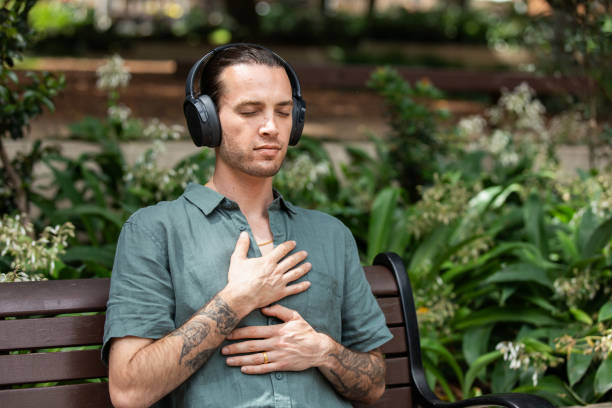"Unraveling the Science behind Breathwork: A Comprehensive Guide to Conscious Breathing"
Take a moment. Inhale. Exhale. Something so simple, so innate, yet so powerful. Our breath: an untapped resource for better health and wellness. But how can something so fundamental transform our wellbeing? The answer lies in the science of breathwork.

Breathwork: A Historical and Scientific Overview
Breathwork, the practice of conscious control over one’s breathing, has its roots in ancient spiritual and healing traditions. From the Pranayama of yoga to the Tummo meditation of Tibetan Buddhism, the power of breath has been recognized and harnessed for millennia.
Fast forward to the 21st century, science has begun to validate the benefits of breathwork. Studies have shown that controlled breathing can help regulate our body’s autonomic nervous system, which controls functions like heart rate, digestion, and stress response.
The Rising Trend of Breathwork in Modern Health
Breathwork is seeing a resurgence in popularity as a convenient and drug-free health solution. Its potential benefits range from reducing anxiety, improving cardiovascular health, to boosting mental clarity.
Top wellness experts are incorporating breathwork into their routines and promoting it as a key component of holistic health. Though it’s not a panacea, its potential as a self-care tool is worth exploring.
The Science and Benefits of Breathwork
Breathing exercises can help us tap into our body’s natural abilities to maintain and restore health. When we breathe deeply and consciously, our bodies respond by activating the parasympathetic nervous system, often referred to as the “rest and digest” system. This results in lowered heart rate, blood pressure, and stress levels.
On the other hand, the practice of controlled hyperventilation, often used in breathwork sessions, can also have its benefits. This technique can stimulate the sympathetic nervous system, our “fight or flight” response, leading to heightened focus and energy.
Delving into the Challenges and Credibility of Breathwork
While breathwork has its merits, it’s not without challenges. The effects of breathwork can be intense, and it’s not recommended for everyone. People with cardiovascular issues, pregnant women, and those with a history of panic attacks should consult with a health professional before starting a breathwork practice.
Despite the growing body of evidence supporting breathwork, more extensive and rigorous scientific studies are needed to fully understand its potential and limitations. It’s essential to approach breathwork with an open mind but also a healthy dose of skepticism.
A Breath of Fresh Air: Interesting Facts and Practical Tips
- Breathwork can be practiced anywhere, making it a versatile tool for managing stress and boosting well-being.
- Different breathing techniques can induce different physiological responses - slow, deep breathing can help with relaxation, while rapid, shallow breathing can stimulate energy and alertness.
- Breathwork not only impacts our physical health but can also have profound effects on our mental and emotional well-being.
Key Takeaways
Breathwork, a practice rooted in ancient traditions, is gaining momentum in the modern health and wellness field. Backed by an increasing amount of scientific research, it offers a promising, accessible pathway to better physical, mental, and emotional health. As we continue to explore this potent tool, we may just find that the key to enhanced well-being lies in the power of our own breath.





